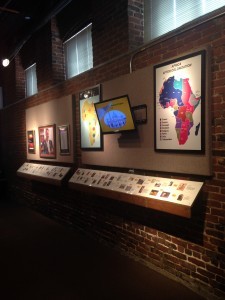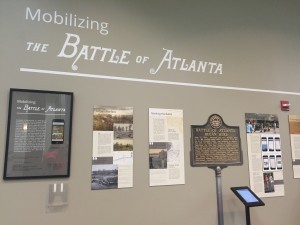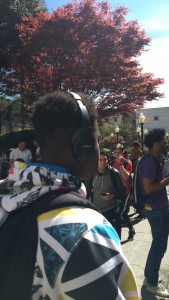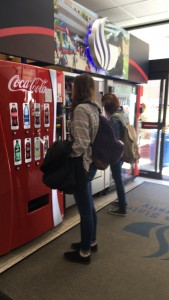Claim #1: Overall, Atlanta’s exterior built environment encourages and sustains racism in the city.
1.1
http://sites.gsu.edu/koglesby6/2016/02/24/annotated-bibliography-4-displacement-and-the-racial-state-in-olympic-atlanta-1990-1996-by-seth-gustafson/
http://sites.gsu.edu/sberry11/2016/02/18/annotated-bib-6-sweet-auburn-market/
http://sites.gsu.edu/hhenry2/2016/03/05/decatur-marta-station-artifact-2/
1.2
SCHINDLER, SARAH. “Architectural Exclusion: Discrimination And Segregation Through Physical Design Of The Built Environment.” Yale Law Journal 124.6 (2015): 1934-2024. Academic Search Complete. Web.
Hankins, Katherine B., Robert Cochran, and Kate Driscoll Derickson. “Making Space, Making Race: Reconstituting White Privilege In Buckhead, Atlanta.” Social & Cultural Geography 13.4 (2012): 379-397. http://www.tandfonline.com/doi/abs/10.1080/14649365.2012.688851#.VuOnUJwrLIU
Even noting the titles of the articles you will see the clear racial elements that must be discussed in each of them. With keywords such as “discrimination”, “segregation”, and “white privilege” a connotation of race relations is present due to the society we live in- The United States of America where race relations and themes of binary racial tensions specifically between Blacks and Whites is a fundamental part of our social makeup now and in history. Architectural Exclusion by Sarah Schindler illuminates the ways built environments and certain spaces promote racial inequities, while Making Space, Making Race: Reconstituting White Privilege In Buckhead, Atlanta highlights the after effects of this institutionalized racial divide.
1.3
<http://www.governing.com/gov-data/gentrification-in-cities-governing-report.html>.
This popular source article explains and provides a good amount of statistical data on Gentrification. Gentrification is the relocation of inhabitants and rebuilding of an area, in such a way that property value is increased. Because of the fact that caucasians on average make up the greatest percent of those in the economical upper and middle class tiers, gentrification subsequently is a form of racism and segregation. The statistical information in the article provides good ethos.
1.4
Bibliography
http://www.governing.com/gov-data/gentrification-in-cities-governing-report.html
http://sites.gsu.edu/hhenry2/2016/03/05/decatur-marta-station-artifact-2/
http://sites.gsu.edu/koglesby6/2016/02/24/annotated-bibliography-4-displacement-and-the-racial-state-in-olympic-atlanta-1990-1996-by-seth-gustafson/
http://sites.gsu.edu/sberry11/2016/02/18/annotated-bib-6-sweet-auburn-market/
SCHINDLER, SARAH. “Architectural Exclusion: Discrimination And Segregation Through Physical Design Of The Built Environment.” Yale Law Journal 124.6 (2015): 1934-2024. Academic Search Complete. Web.
http://www.tandfonline.com/doi/abs/10.1080/14649365.2012.688851#.VuOnUJwrLIU
1.5
http://sites.gsu.edu/koglesby6/2016/03/04/apex-museum-pictures/

Apex Museum
Claim #2: Atlanta’s interior environments reflect an unspoken, ongoing segregation.
2.1
https://sites.gsu.edu/marmstrong16/2016/03/09/actually-an-annotation-segregation-via-contemporary-architecture/
http://sites.gsu.edu/mwatley1/2016/01/26/architectural-exclusion-discrimination-and-segregation-through-physical-design-of-the-built-environment-summary/
http://sites.gsu.edu/dgrant15/2016/02/15/schindler-sarah-architectural-exclusion-discrimination-and-segregation-through-physical-design-of-the-built-environment-yale-law-journal-124-6-2015-1934-2024-academic-search/
2.2
http://eds.a.ebscohost.com/eds/detail/detail?sid=f4ca6044-799c-4f13-8b8a-7f9c667eaa65%40sessionmgr4003&vid=0&hid=4202&bdata=JnNpdGU9ZWRzLWxpdmU%3d
This article highlights White Privilege in places of residency with higher socio economic status. White Privilege is a direct result of institutionalized racism in America, this ties into the issue of institunalized classism (building ethos) as Caucasians make up the majority of those ranked higher in the American classist system, thus subsequently causing segregation based on race in Atlanta.
2.3
http://www.psmag.com/business-economics/can-development-reduce-poverty-3943
http://sites.gsu.edu/wfoster6/2016/03/22/reading-summary-3/
2.4
Bibliography
http://eds.a.ebscohost.com/eds/detail/detail?sid=f4ca6044-799c-4f13-8b8a-7f9c667eaa65%40sessionmgr4003&vid=0&hid=4202&bdata=JnNpdGU9ZWRzLWxpdmU%3d
2.5
http://sites.gsu.edu/nramirez5/2016/03/07/battle-of-atlanta/




